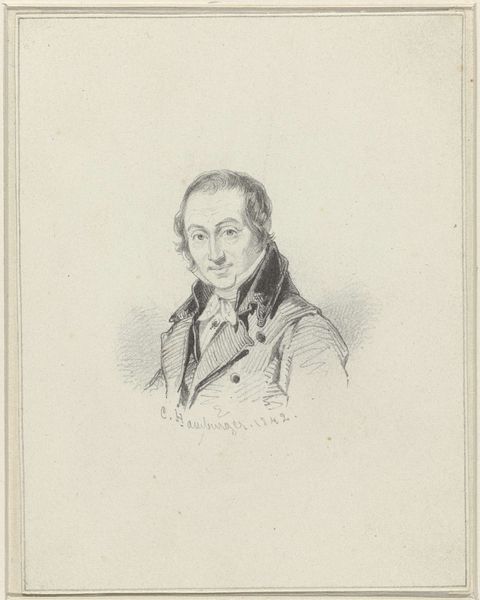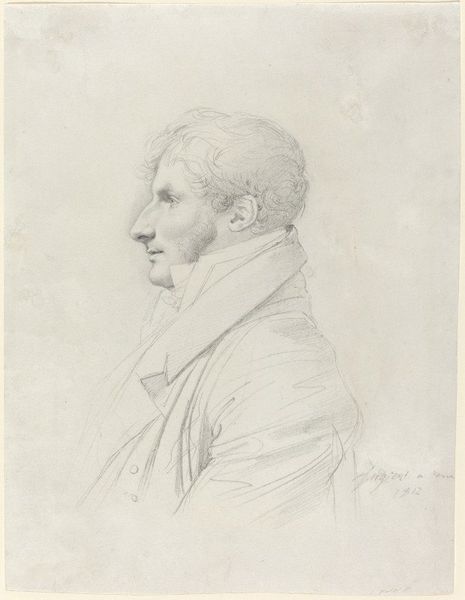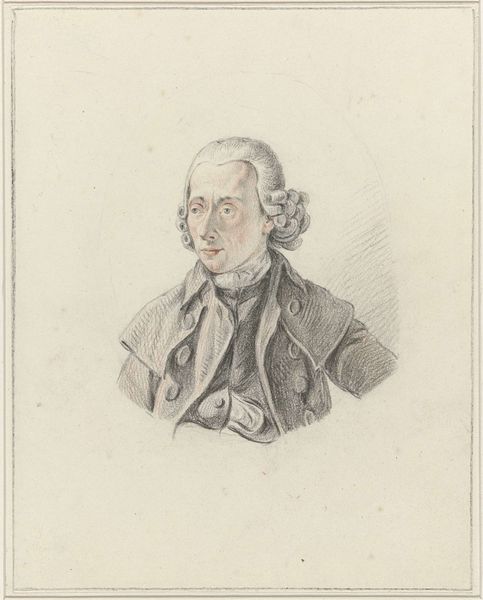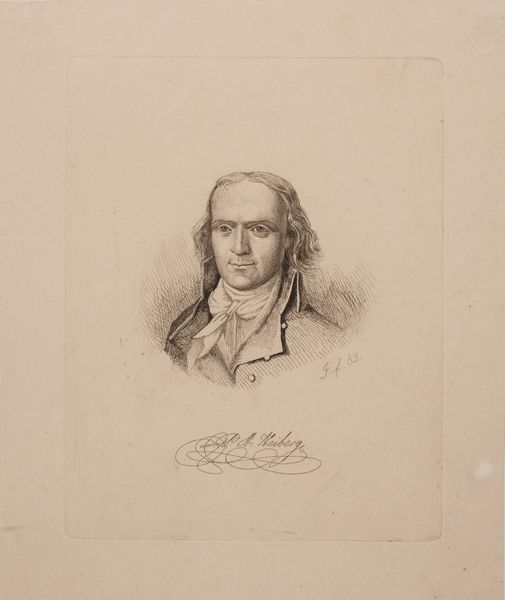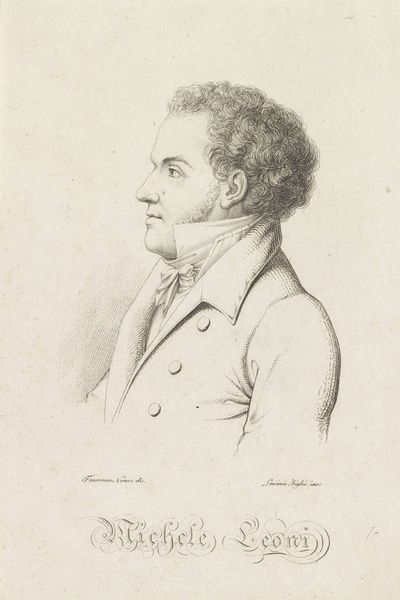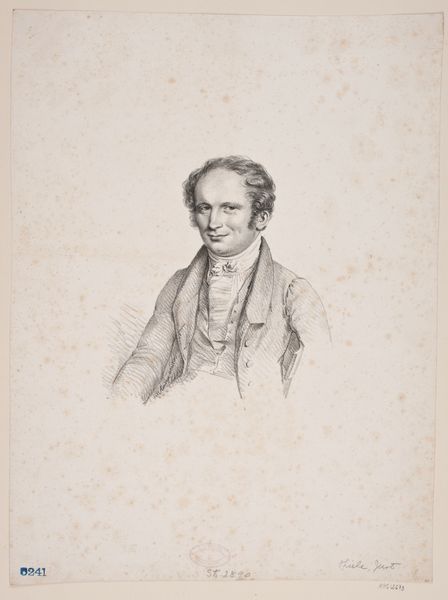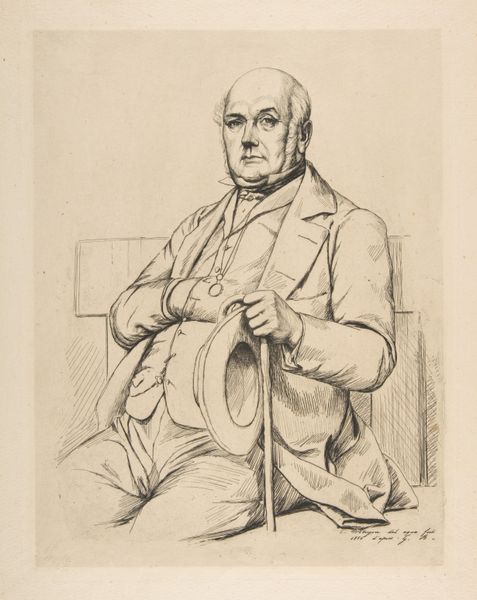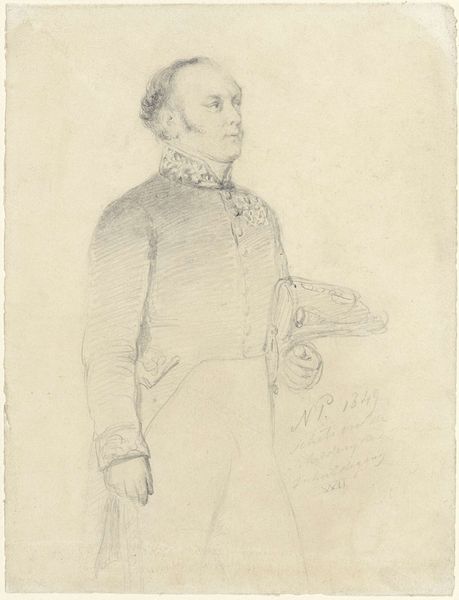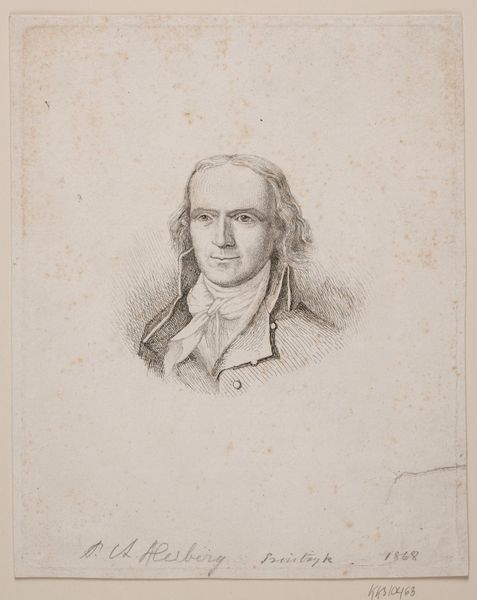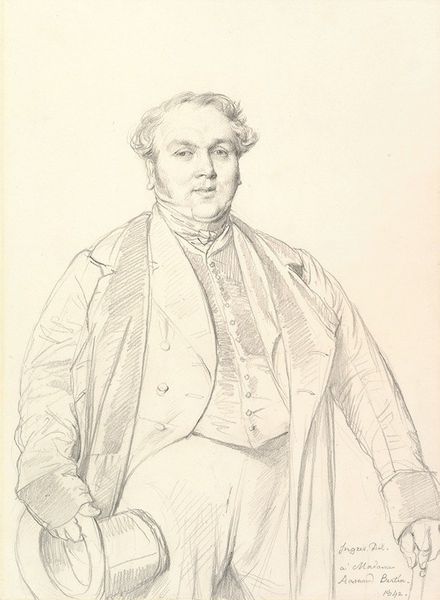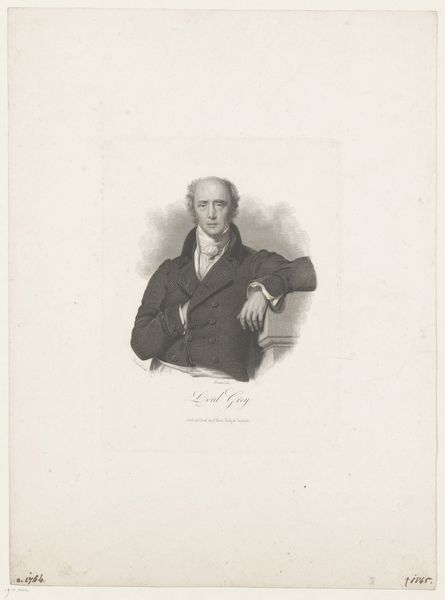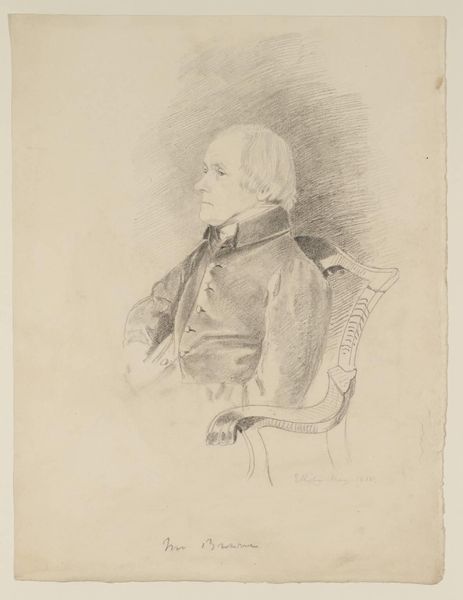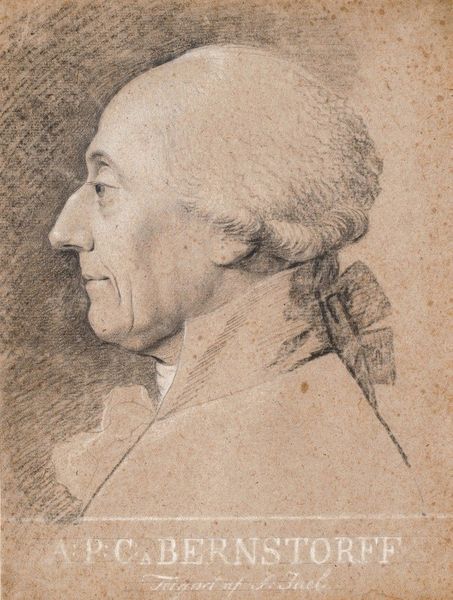
drawing, pencil
#
portrait
#
drawing
#
neoclacissism
#
charcoal drawing
#
pencil drawing
#
pencil
#
portrait drawing
#
academic-art
Copyright: Public Domain: Artvee
Editor: This is Jean-Auguste-Dominique Ingres’s “Monsieur Lavergne,” a pencil drawing from 1818. It's incredibly detailed, especially for a pencil drawing. I’m curious about how Ingres approached portraiture with such…precision. What strikes you about this piece? Curator: I am drawn to Ingres’s handling of material in relation to the subject’s social standing. Pencil, often associated with preliminary sketches or academic exercises, is here employed to portray a member of the bourgeoisie, Monsieur Lavergne. Note the detailed rendering of the clothing—the cut of the coat, the quality of the fabric, all meticulously depicted with what we might consider a 'humble' material. Why choose pencil for such a formal portrait? Editor: Perhaps because of the immediacy it offers? Pencil allows for quick corrections and adjustments... a working-class tool for portraying the upper class? Curator: Precisely. Consider, too, the labor involved in producing such a detailed drawing. Each line, each shadow meticulously placed, reflecting not just technical skill, but also the economic reality of art production in 1818. Was this drawing commissioned, or a study? Who controlled access to these materials, and ultimately, the representation of Monsieur Lavergne? The value isn't just in the artistry but in the means of its creation and how that reflects on social structures. Editor: So it's not just the image, but also the story the materials tell about production and class? Curator: Exactly. It makes us reconsider the relationship between 'high art' and the often unseen, yet fundamental, labor and materials that underpin it. The pencil marks here tell a tale of not just artistry, but also social construction and economic realities. Editor: I never thought about it that way, seeing the art supplies as almost characters themselves, revealing more about society at the time. Thanks!
Comments
No comments
Be the first to comment and join the conversation on the ultimate creative platform.
